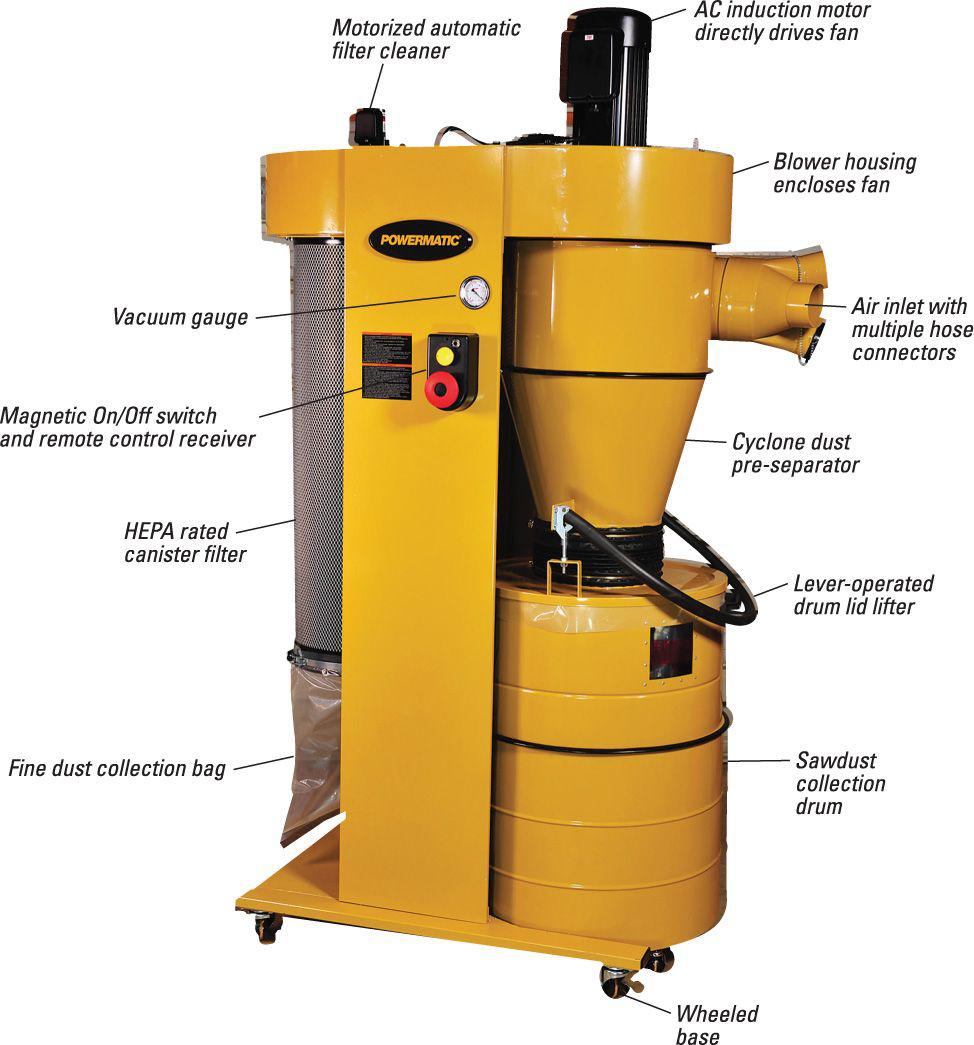Dust Collectors: A Key Tool for Shop Safety


If you won the lottery tomorrow, I bet you’d much rather spend some of the money on a new table saw or a set of high quality chisels instead of on a dust collector. I think that buying and using good tools is a lot more exciting than getting rid of the sawdust they produce. But investing in a dust collector and creating a good collection system not only keeps your shop cleaner, it helps keep you safer and healthier as well. Why bother using dust collection to gather the sawdust, chips and fine dust generated by practically every step of the woodworking process? There are at least four good reasons:
• Sawdust is a nuisance. Shavings and chips tend to accumulate quickly and pile up everywhere. Sawdust on the floor gets tracked all over the shop and into living spaces. Fine dust wafts around and inevitably ends up on freshly glued or finished surfaces.
• Sawdust is a fire hazard. Tinder-dry wood chips ignite all too easily and can burn your lovely workshop — and possibly your home — to the ground. All it takes is an errant spark from a grinding wheel or from sanding over a steel screw with a belt sander to start a blaze. Fine dust that infiltrates electrical junction boxes and collects atop lighting fixtures is also a common source of woodshop fires.
• Fine wood dust is a health hazard. Particles of fine wood powder too small for the human eye to see can stay aloft for hours after woodworking’s done and wreak havoc with your sinuses, bronchial passages and lungs. Possible health problems range from congestion to allergic reactions to respiratory ailments including emphysema and cancer. Unfortunately, the effects of breathing wood dust are cumulative: it can take years to develop symptoms which signal damage to your body that may be irreversible.
• Dust collection keeps machines running better. Sucking chips away from blades and cutters as they are produced helps prevent them from being recut over and over again, hence saving wear and tear to
You’re reading a preview, subscribe to read more.
Start your free 30 days





